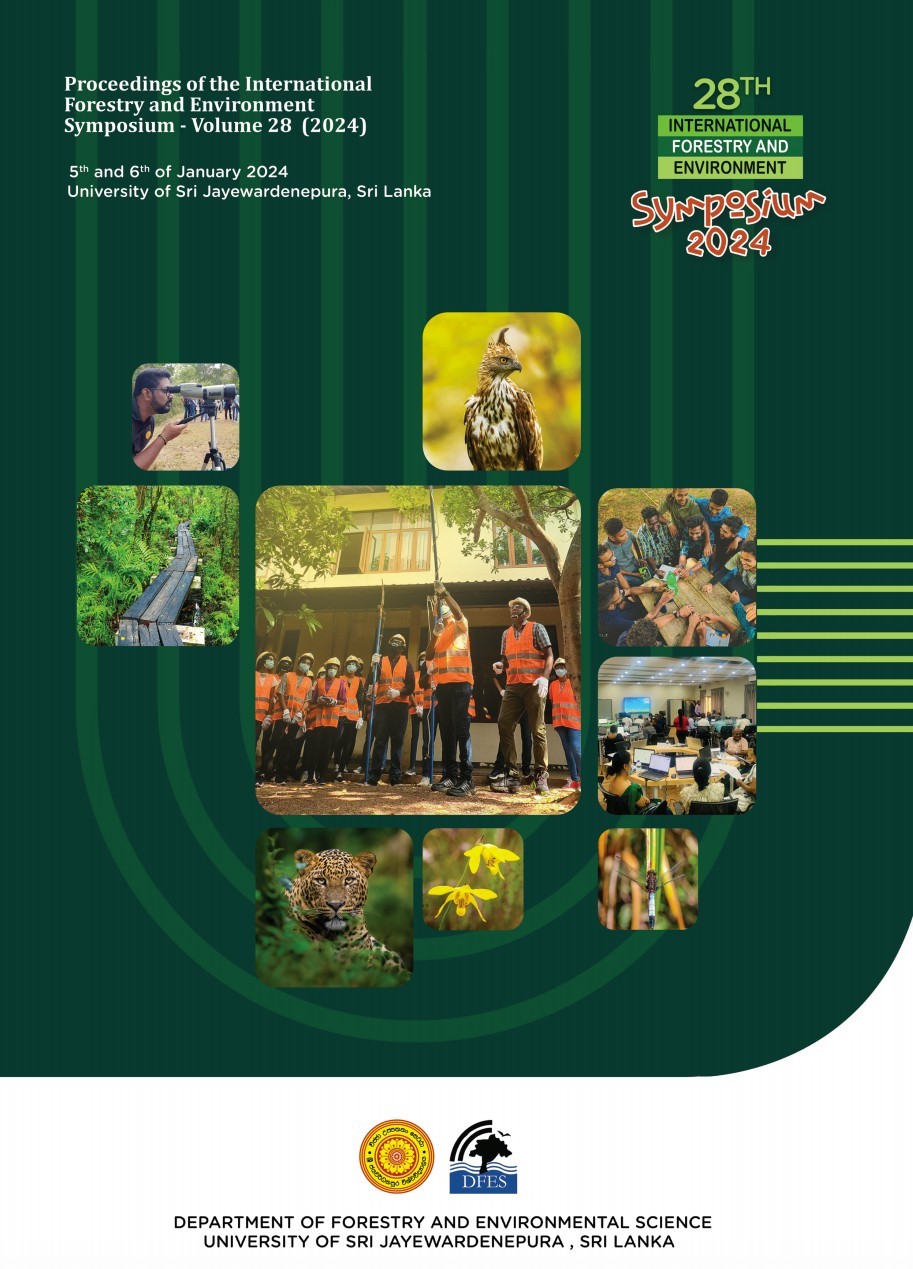Range Expansion of an Aquarium Escape: Tinfoil Barb (Barbonymus schwanenfeldii) in the Mahaweli River of Sri Lanka
DOI:
https://doi.org/10.31357/fesympo.v28.6925Abstract
Originally from Southeast Asia, Tinfoil barb (Barbonymus schwanenfeldii) is a Cyprinid fish established well over a long period in Sri Lankan aquarium trade. However, its first record from natural waters was in 2015 from Amban Ganga, a tributary of Mahaweli river. The abundance and distribution of Tinfoil barb in Mahaweli river basin and its schooling behaviour were studied from 2018 to date. Cast netting, direct bank counts during high water transparency, and local fisher catch examination were employed. Literature survey and Structured Interview Surveys (SIS) were conducted to identify range expansion backwards in time and its introduction into the river network. Spatial distribution of Tinfoil barb was mapped, analysed, and processed using ArcGIS 10.5 software. Minitab 17 was used for statistical analysis. According to SIS, Webadagama off the south-eastern boundary of Wasgamuwa National Park was recognized as the potential point of escape to the wild around 2013. The first point of discovery of the species is 27 km northwest and downstream from Webadagama. At present, B.schwanenfeldii is spread across 49.22 km2 in Mahaweli river basin. Time Series Analysis revealed that the initial rapid rate of increase in the area of occupancy (2015-2018: r=0.276) has reduced over time (2018-2021: r=0.065 and 2021-2023: r=0.061), forecasting a limitation in expansion further downstream or upstream. However, lateral expansion across tributaries (Radavige oya, Heen ganga, Kiri Oya) was evident. Downstream expansion exceeds upstream expansion. By 2018, the species had reached 44.9 km downstream and 14.4 km upstream. It has now reached 80.1 km downstream and 46.5 km upstream. Tinfoil barb has invaded the dynamic meta-ecosystems from main river occupying villu ecosystems (Handapanvillu: Flood Plains and Beruwila-villu: Somawathiya NPs) recently. Mixed schools of Tinfoil barb and other native fish (Dawkinsia singhala, Dawkinsia srilankensis, Rasbora daniconius) were recorded with an average ratio of native fish: B. schwanenfeldii-33.60:1.58 in 2018, and 39.36:9.65 in 2022 from Amban and Mahaweli rivers. Exclusively Tinfoil barb schools were observed in two of 11 sampling locations in 2022. A significantly negative relationship was revealed between the abundance of Tinfoil barb and native fish during past 5 years (Linear Regression: (P<0.001). An omnivorous and detritivorous species with high fecundity and reaching almost 0.35m in size this schooling fish poses a threat to native freshwater species of Sri Lanka. Keywords: Tinfoil barb, Aquarium escapes, Invasive, Freshwater fish, Mahaweli river><0.001) An omnivorous and detritivorous species with high fecundity and reaching almost 0.35m in size this schooling fish poses a threat to native freshwater species of Sri Lanka.
Keywords: Tinfoil barb, Aquarium escapes, Invasive, Freshwater fish, Mahaweli river



